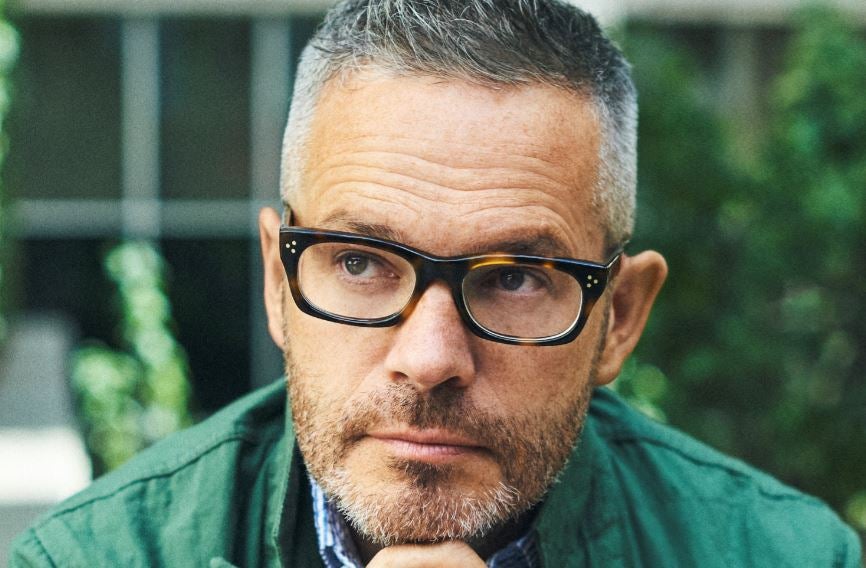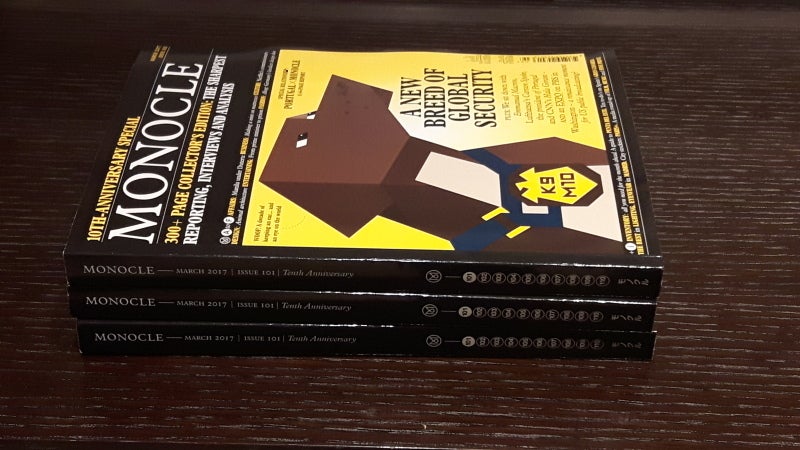
Even in 2007 launching a 250-page monthly magazine about international current affairs seemed ambitious.
I recall looking at the waist-high piles of Monocle in WH Smith and wondering how many people out there were going to pay £5 to read a magazine which led with an 18-page report on the Japanese navy.
But ten years on Monocle has not just survived but thrived, and despite extensive digital expansion the print magazine remains its main focus.
The current anniversary issue runs to over 300 pages and includes an interview with French presidential hopeful Emmanuel Macron and a six-page cover story on US police dogs.
At a time when newspapers are seeing a sharp drop in print advertising, last year Monocle made more money from its magazine then ever before.
The title has added a 24-hour online radio station to its website in recent years and has a current focus on expanding its book publishing division.
Print circulation has held steady and currently stands at 80,251, of which just over 50,000 are actively purchased.

Monocle is still based in London but sells most of its copies in the US. Australia and Europe are also big markets.
It has grown from 18 to 55 editorial staff and has seven editorial offices around the world.
In 2014, when Nikkei took a minority stake in the business, Monocle was valued at $115m (£70m at the time). Editor in chief Tyler Brûlé’s holding company today owns more than 80 per cent of the business.
Asked what possessed him to launch Monocle, with initial investment of £3m, Canadian Brûlé told the Press Gazette Journalism Matters podcast: “Even a decade ago there was an erosion in print, a number of publishers were trying to do as much as they could on the printed page but also cope with the pressures of wading into the digital world and neither was being done particularly well.
“We saw there was an international globally-minded consumer who wasn’t being spoken to.
“It was a really tough sell to raise money and make this happen.”
And how did they manage to keep the show on the road after the global financial collapse of 2008?
“There were some very dark hours in 2008, I can remember sitting in board meetings thinking the pile of cash is dwindling very fast and the advertising pages are drying up and then a miraculous thing happened – in the midst of all of it we saw this uplift in sales.
“Here we were as an international title reaching a variety of markets but we weren’t a very big out-of-pocket spend. The big news weeklies, who were incredibly expensive, lost advertising, Monocle turned out to be an interesting buy for people.”
He adds: “We were always showing an optimistic view of the world. It wasn’t bad in Canada or Australia, it was a car crash in some markets but it wasn’t the case all over the world.
“From a commercial point of view there’s always a bright spot in the world and those are the markets we try to capitalise on.”
Where does the income come from now for Monocle?
“The vast majority is still money on paper, it is print advertising. Digital has grown with the 24-hour radio station.
“We closed last year up 8 per cent primarily driven by print and the current bumper issue was 28 per cent up on advertising from last year.
“When we walk about advertising it’s a mix of traditional display but we do a lot of advertorials as well. That’s been a really significant area of growth.”
Flicking through Monocle after the interview I search in vain for the words advertorial or sponsored feature and eventually work out that the Monocle formula for flagging up paid-for editorial appears to be an X. So for instance “Lisbon Tourism X Monocle” appears at the top of a four-page travel feature on Portugal.
It is, it seems fair to say, a fairly light touch approach to the Advertising Standards Association rules on labelling of paid-for content.
But it is also balanced with plenty of serious, independently produced journalism.
That initial £3m outlay is now long-since paid back and Monocle is said to have been in profit since year four.
The typical Monocle reader is, Brûlé says, pushing 40, male and working in finance.
Asked what the future holds for the title, Brûlé says that digital is important – with more original content planned for the radio station – but print appears to be the main area of growth.
More print specials in the magazine, on business and travel, and more books with a focus on travel guides, essays and reportage.
As I struggle to squeeze the current bumper print edition into my rucksack it seems counter-intuitive that in the era of ever smaller digital media devices Monocle is doing so well. Why is it?
“People still want the tactile and the tangible. You want to sit on a comfortable sofa that is well upholstered in the same way that you want to have a good linen napkin in your hand and you want to hold on to a fantastic book and fantastic magazine. That snap between your fingertips doesn’t change.”
Brûlé says it is also clear that print can retain and engage readers in a way that digital platforms cannot.
He says: “To just be constantly swiping your index finger across a back-lit screen. I think everyone is realising is not that fulfilling.”
Email pged@pressgazette.co.uk to point out mistakes, provide story tips or send in a letter for publication on our "Letters Page" blog
